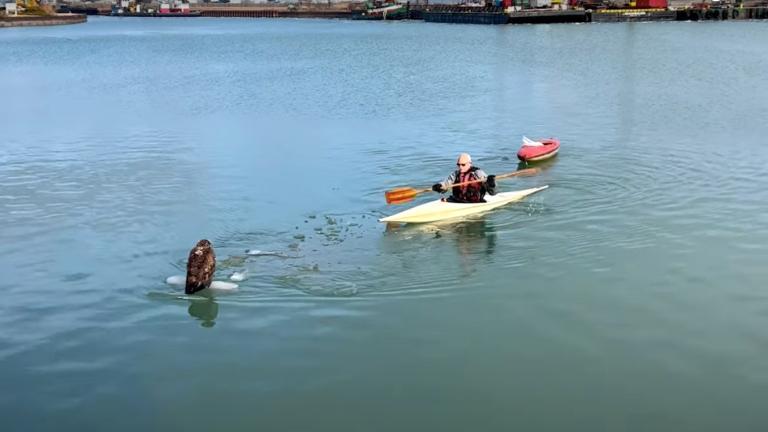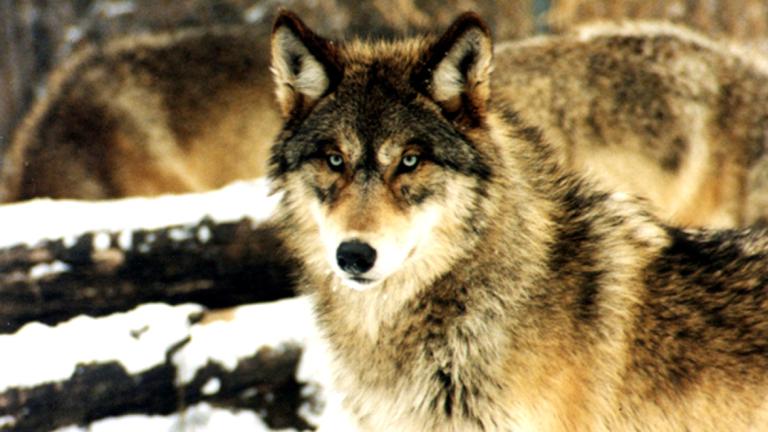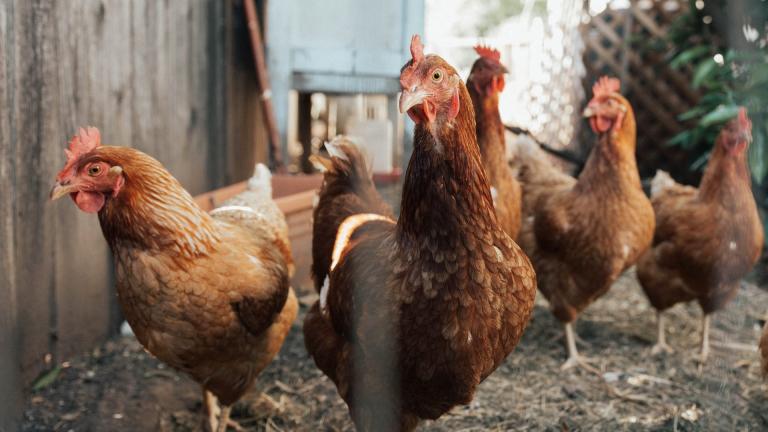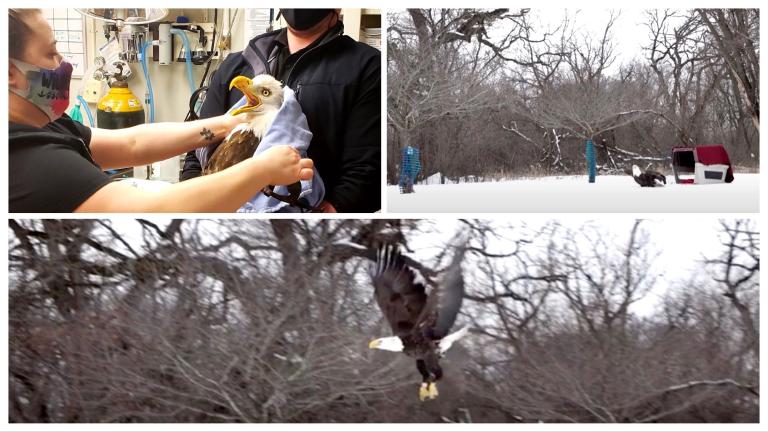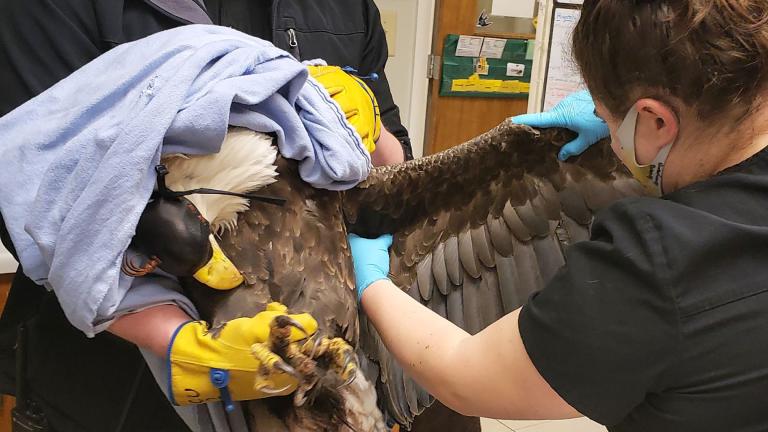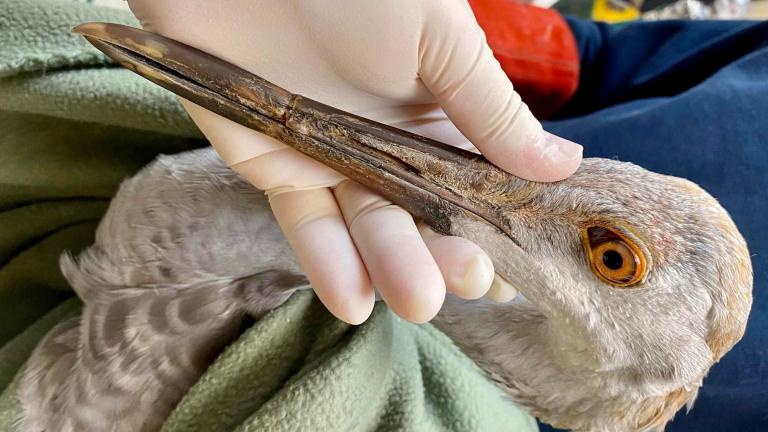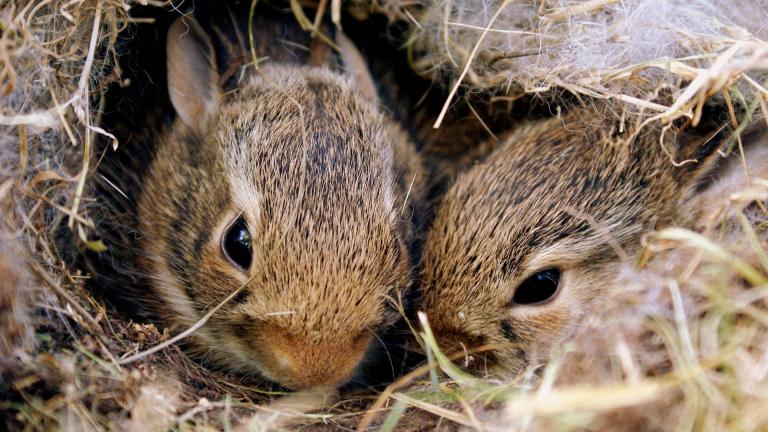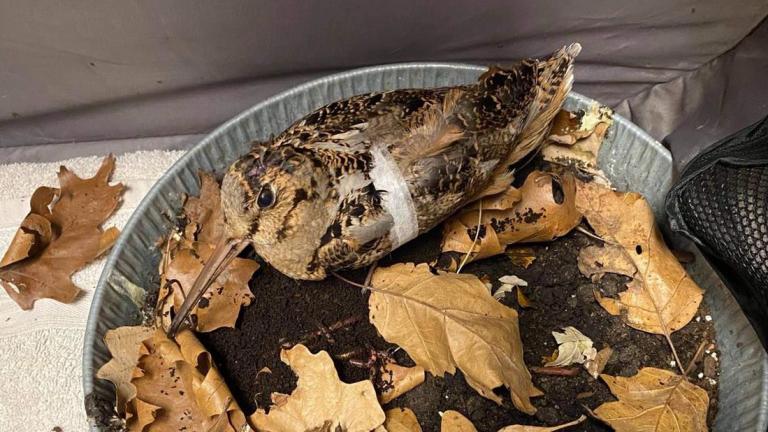"Despite promising signs of recovery the first 48 hours, the bird took a very rapid turn for the worst," Willowbrook Wildlife Center shared on social media.
Willowbrook Wildlife Center
A GPS collar allowed researchers to track the wolf from Michigan all the way to Manitoba, Canada. That's just one of the wild stories we followed this week.
Rescuing a bald eagle floating on ice in open water raises the stakes exponentially, but volunteers with Chicago Bird Collision Monitors proved up to the task with a New Year's Day recovery effort.
The DuPage Forest Preserve District board, which operates and funds the center, approved a plan for a new clinic that meets 21st century needs and standards and promises to be the district's first net-zero building.
The strain of highly pathogenic avian influenza circulating in the U.S., the first since 2016, doesn’t appear to pose a threat to humans, but is highly contagious among birds and often fatal.
The eagle was released back into the Cook County preserve where it was found New Year’s Day, bleeding profusely. The raptor quickly reunited with its mate after more than a month apart.
The snowy owl is being treated at Willowbrook Wildlife Center, where a bald eagle is recuperating from the same issue. Anticoagulants in rodenticides can be deadly to the birds of prey that eat poisoned rats, mice and other rodents.
Eagles don't eat rat poison, but they do eat the critters that take the bait. The powerful toxins keep blood from clotting, and a recently rescued eagle would have bled to death from a tiny cut, said the veterinarian caring for the bird.
The U.S. needs a national strategy to deal with its plastic waste problem, which the country produces at a greater rate than the entire European Union combined, according to a new report. Interventions can’t come soon enough for wildlife.
Learn when to step in, when to back off
Just because a baby animal is spotted on its own doesn’t mean it’s been abandoned or orphaned. Before “rescuing” the critter, call the experts.
An American woodcock, one of the earliest migratory arrivals in Chicago, is recovering from a head wound and broken clavicle after colliding with a building in Chicago.

